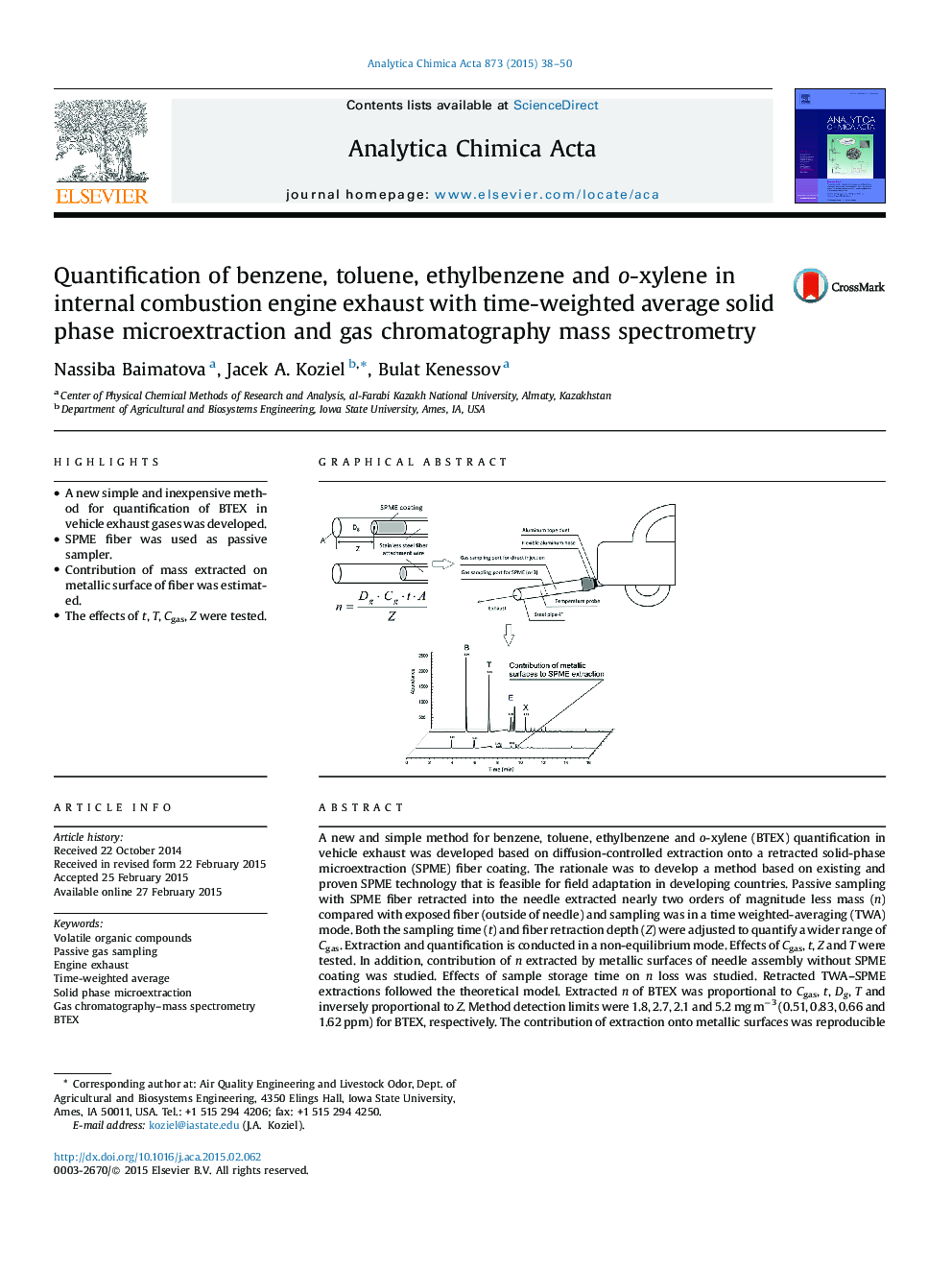| Article ID | Journal | Published Year | Pages | File Type |
|---|---|---|---|---|
| 1163818 | Analytica Chimica Acta | 2015 | 13 Pages |
•A new simple and inexpensive method for quantification of BTEX in vehicle exhaust gases was developed.•SPME fiber was used as passive sampler.•Contribution of mass extracted on metallic surface of fiber was estimated.•The effects of t, T, Cgas, Z were tested.
A new and simple method for benzene, toluene, ethylbenzene and o-xylene (BTEX) quantification in vehicle exhaust was developed based on diffusion-controlled extraction onto a retracted solid-phase microextraction (SPME) fiber coating. The rationale was to develop a method based on existing and proven SPME technology that is feasible for field adaptation in developing countries. Passive sampling with SPME fiber retracted into the needle extracted nearly two orders of magnitude less mass (n) compared with exposed fiber (outside of needle) and sampling was in a time weighted-averaging (TWA) mode. Both the sampling time (t) and fiber retraction depth (Z) were adjusted to quantify a wider range of Cgas. Extraction and quantification is conducted in a non-equilibrium mode. Effects of Cgas, t, Z and T were tested. In addition, contribution of n extracted by metallic surfaces of needle assembly without SPME coating was studied. Effects of sample storage time on n loss was studied. Retracted TWA–SPME extractions followed the theoretical model. Extracted n of BTEX was proportional to Cgas, t, Dg, T and inversely proportional to Z. Method detection limits were 1.8, 2.7, 2.1 and 5.2 mg m−3 (0.51, 0.83, 0.66 and 1.62 ppm) for BTEX, respectively. The contribution of extraction onto metallic surfaces was reproducible and influenced by Cgas and t and less so by T and by the Z. The new method was applied to measure BTEX in the exhaust gas of a Ford Crown Victoria 1995 and compared with a whole gas and direct injection method.
Graphical abstractFigure optionsDownload full-size imageDownload as PowerPoint slide
